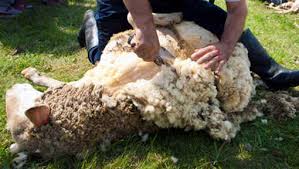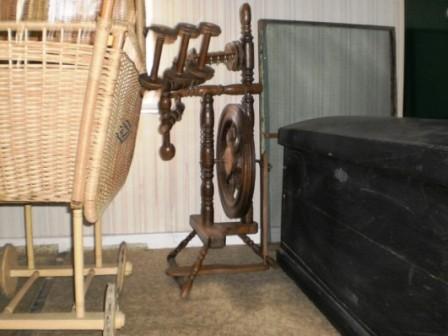 If sheep are not trimmed, they will lose regularly wool or sanding it. You will find so rarely wool of 30 cm. To collect (and process) wool it is of course easier to shear sheep. An adult sheep produces 3.5 to 4 kg of wool.
If sheep are not trimmed, they will lose regularly wool or sanding it. You will find so rarely wool of 30 cm. To collect (and process) wool it is of course easier to shear sheep. An adult sheep produces 3.5 to 4 kg of wool.
Wool consists of soft, thin hair coat.
Unlike hair, wool has scales, that’s why seeds and twigs stick in it.
Wool is also crimped. It has up to 20 bends per 2.5 centimeters. This keeps the air very well, making wool a good heat insulator. The scales and the frizz make that wool can be spun. The fibers thereby hook together and remain stuck.
Wool fibers vary in thickness from 10 microns for fine wool in the inner coat of Merino sheep to 40 microns in the outer coat of Shetland sheep. The thinnest fibers give the slightest irritation to the skin. Most people suffer from itch as wool fibers are thicker than 28 microns. (This is called the itch point.)
 Wool can hold a lot of moisture (up to 40% by weight). It can take moist from the air without feeling wet itselves.
Wool can hold a lot of moisture (up to 40% by weight). It can take moist from the air without feeling wet itselves.
Other known wool suppliers are
- the angora rabbit, the wool is very soft and very light. To make it stronger angora is blended with wool or other fibers.
- the Kashmir goat from Central Asia,
- Alpaca, who lives in the Andes in South America.
Wooly pigs (Mangalitsas) are (Hungarian) pigs with a coat that resembles wool. However, they are – as I know - only (on a limited scale) bred, just for meat.
(Wool grease: see <Ointment, cream, vaseline >
People are sheep. TV is the shepherd. (Jess C. Scott)
